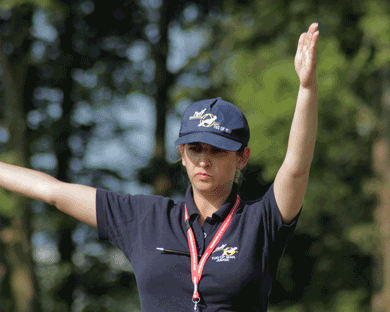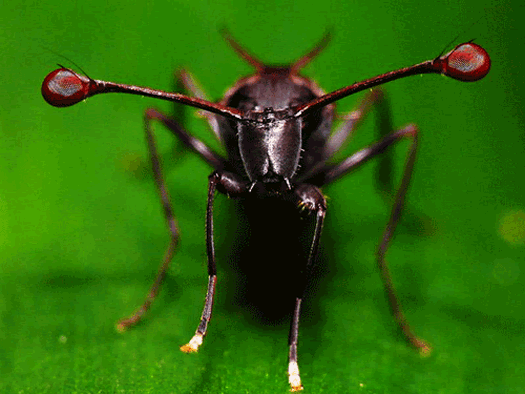Eyes on stalks
Tug-of-war is no jury sport, like Gymnastics or Artistic Skating. The result of a tug-of-war pull is based on defeating the opponent. The role of a Judge is purely to ensure that the pull is played fair and within the rules. The judges observe the teams to see whether they pull the rope in accordance with the rules. The official rule simply says that in pulling position only the feet can touch the surface and the rope can only be grasped with the bare hands. Violation of the rules such as for example sitting on the ground or locking the rope is an offence. In case of an infringement of the rule by a puller, the team will be penalized with a caution. The third caution results in disqualification of the team, resulting in a victory of the opponent.

The judge stands on the middle line and observes the teams to the left and right of the Judge. As the angle of the human vision is limited to more or less hundred and forty degrees, it is obvious that the judge needs to take a position on a considerable distance from the rope to be able to see both teams. To monitor what happens in the outer edges of his vision, the judge needs to turn his head frequently sideways. But the judge is unable to see what happens on the opposite side of the rope. Therefore the judge has the assistance of two side judges, who each observe one team. When they see an infringement, they signal the offence to the centre judge. It’s up to the discretion of the centre judge to caution the team.
In comparison to referees in other team sports such as football/soccer, the job of a tug-of-war judge is not physically demanding. He can stay on the same place during the match, it’s however a matter of concentration to monitor the actions of the teams. Mentally his task is more demanding as the judge has a direct effect on the result of a match. After two cautions to a team, his decision to caution the team for the third and last time will result in the loss of the pull.

All judges of the TWIF Panel of Judges are qualified through a TWIF Judges Course. The performance of the judges is assed at each and every TWIF competition, to ensure that they remain on the required high standard. Nevertheless there are good judges and better judges. The most valuable capacities of a top Judge are consistency, objectivity and being observant in order not to miss a trick. In the tug-of-war sport there are no individual stars in a team, however every puller has its own quality which contribute to the overall performance of the team. A good and a fair judge does not influence the result of a competition, but through consistent and objective judging the judge improves the quality of the event. As such the judges contribute to the attractiveness of the tug-of-war sport.
The starting procedure is controlled by arm and hand signs of the judge. In 1980 TWIF introduced a set of signals to communicate the judge’s decisions to the spectators and recorders. The tug-of-war sport has many traditions which are well and long preserved. One of these traditions has been that the judge’s uniform consisted of a blazer and a cap. Making arm signs did not quite fit with the wearing of blazers, yet it took until 2001 at the World Games in Akita, Japan for a more fitting uniform consisting of a polo shirt and a sweater to be introduced.
